|
BULB LOG 32 --- 8th August 2007
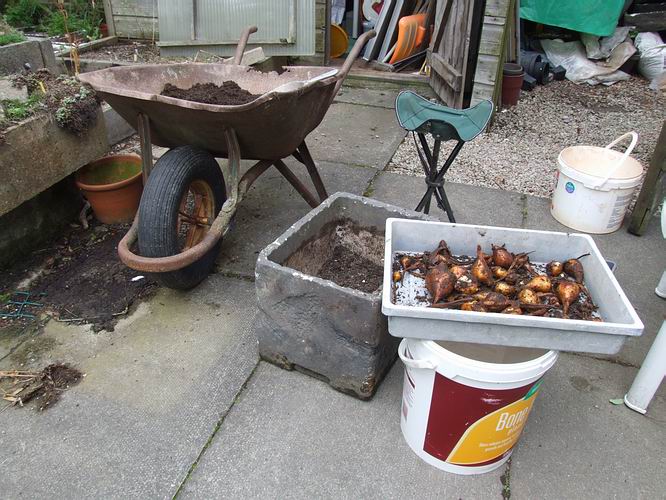
Repotting colchicums
Whenever it is not raining I am outside working through the re-potting - here I am working on the boxes of colchicums. These deeper boxes are ideal for colchicums and erythroniums especially, as they like to be planted quite deeply.
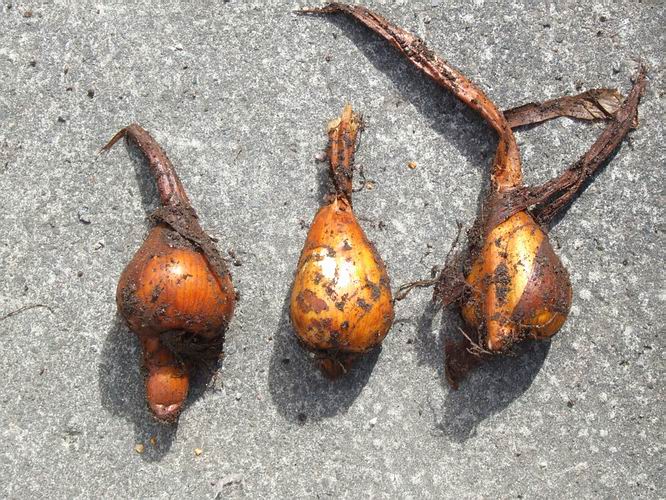
Colchicum bulbs
Colchicum bulbs often have a 'foot' extending down from the bulb/corm and the new roots will emerge from the bottom of this foot.
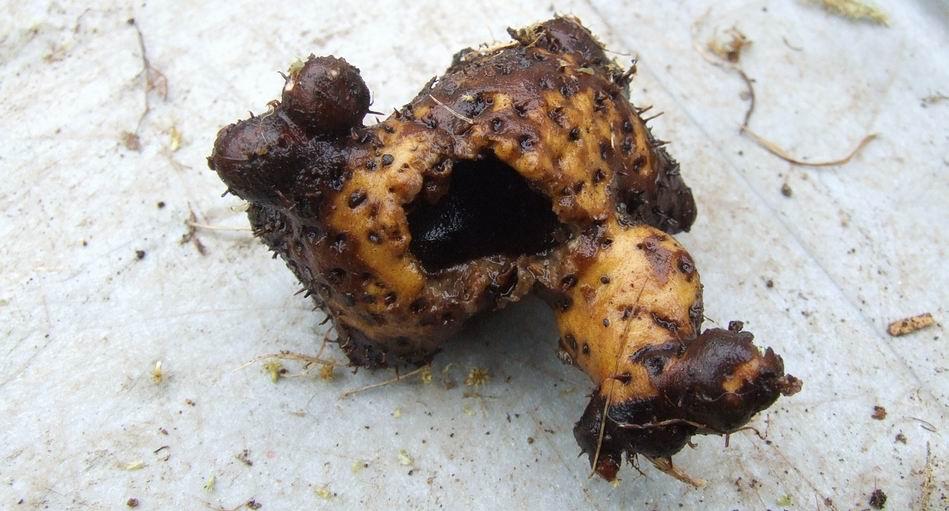
Mystery object
Question what on earth is this? It has a hollow centre. It reminds me of Desperate Dan's chin.
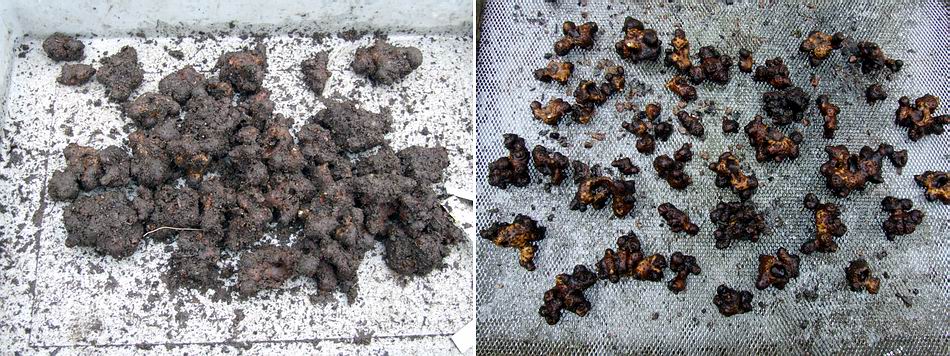
Eranthis 'Guinea Gold' tubers
Ok well done if you got it right, it is an Eranthis 'Guinea Gold' tuber. Working in the very wet compost is not easy or pleasant as the tubers come out all muddy and it is difficult to tell if they are healthy or not so I place them on a wire mesh and wash them off with a strong spray from the hose. This allows me to see all the details and how many growth points there are.
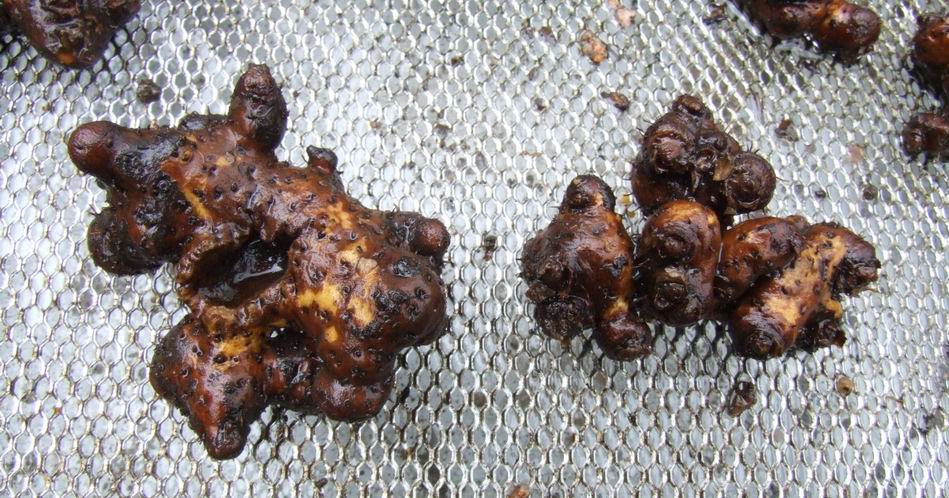
'Guinea Gold' tubers
Eventually the hollow centre enlarges as more and more growth points appear until the larger ones separate off to form the parent. It is possible to split up the tubers by cutting off the individual growth points but this can lead to rot and I prefer to wait until it happens naturally or until the link between the offset and the parent is so slight that it breaks when I handle it.
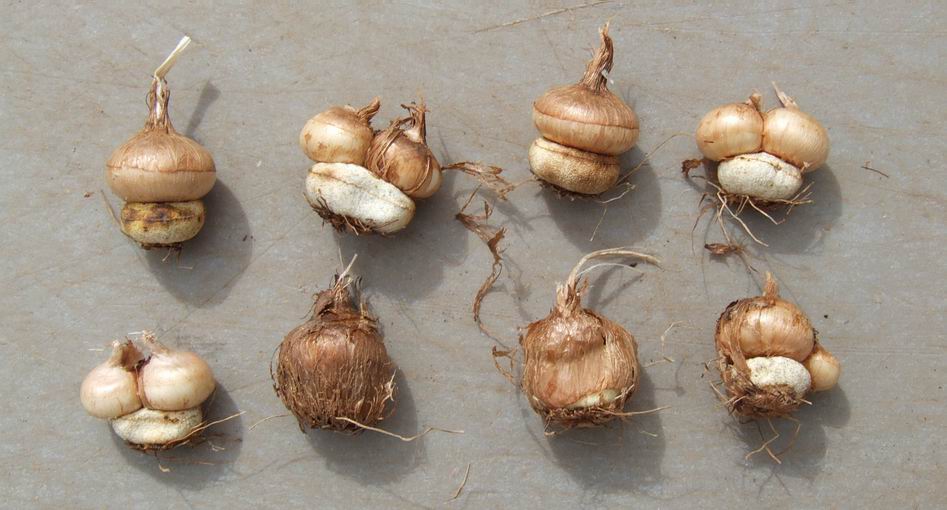
Crocus corms
I spoke earlier about the problems I had this year with some crocus corms not growing properly in that the old corm was still quite large and the new corms were smaller than they should be. Here is another perfect example of what you should not find. You can see clearly the old corm, which should have shrunk to almost nothing, sitting below the new ones. Obviously the unseasonably hot conditions in April, allied to the fact that I did not give them sufficient water, has lead the normal growth to be suddenly halted preventing the old corm passing on the remains of its food store to the new forming corm. Interestingly I also found a few seed pods well formed except they were full of unfertile seed. I suspect the seed had been successfully pollinated but with the growth shutting down prematurely in the hot conditions the growth of the seed was also arrested.
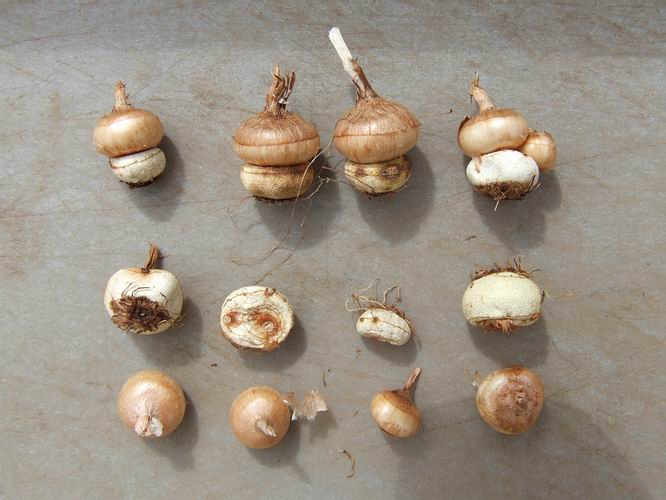
Old corms removed
I never like to waste an opportunity to learn more about bulbs and I always learn more when something goes wrong like this than I do when everything grows well. I am now wondering if I should leave the old corms on to see if they can still pass on the reserve of food, if indeed it is still in a form that will rehydrate - or will I take them off in case they are dead and may start to rot. I will do both to see what happens and I will also plant up the old corms that I have removed to see if it is possible that they have life left in them and may form another corm.
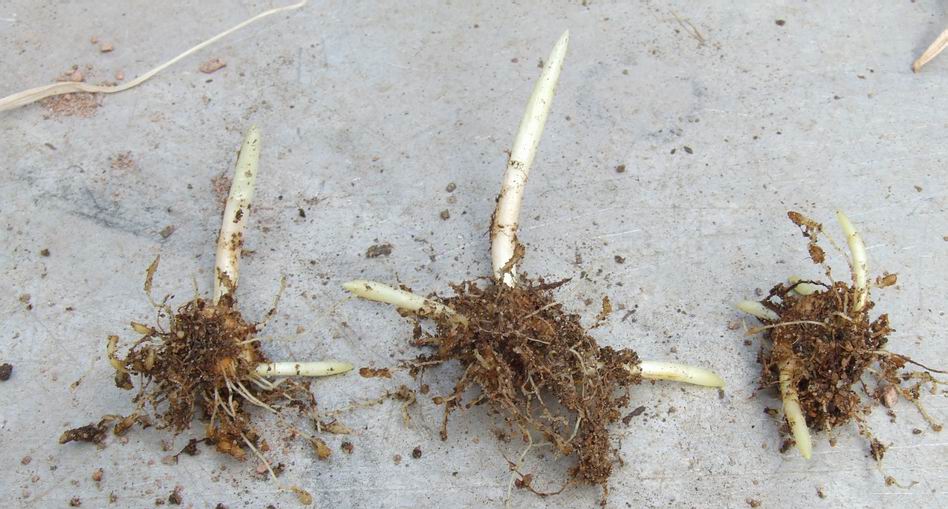
Crocus nudiflorus corms sprouting
Some crocus are making a very early start due to the wet weather as these sprouting corms of Crocus nudiflorus already have roots and stolons coming from the base and flowers shoots 2cms long. It is plain to see from the pictures above that crocus produce true corms; that is the 'bulb' is a modified swollen stem where the roots come from the base and the main shoot comes from the top. Crocus nudiflorus is one of a number of corms that also produce stolons from the base, each of which will form a new corm.
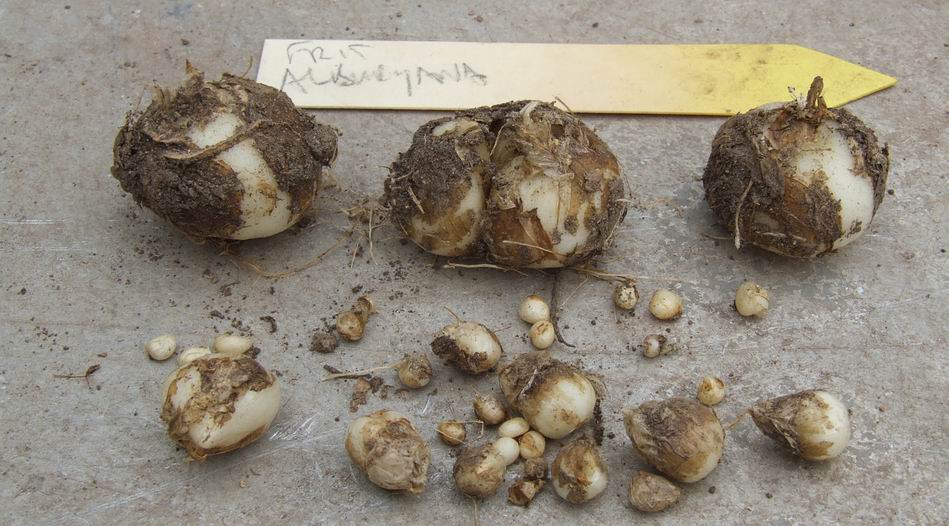
Fritillaria alburyana bulbs
Classic frits such as Fritillaria alburyana produce bulbs where the storage is in the form of modified leaf bases that swell up with starch to form the twin scales so commonly seen in Fritillaria species.
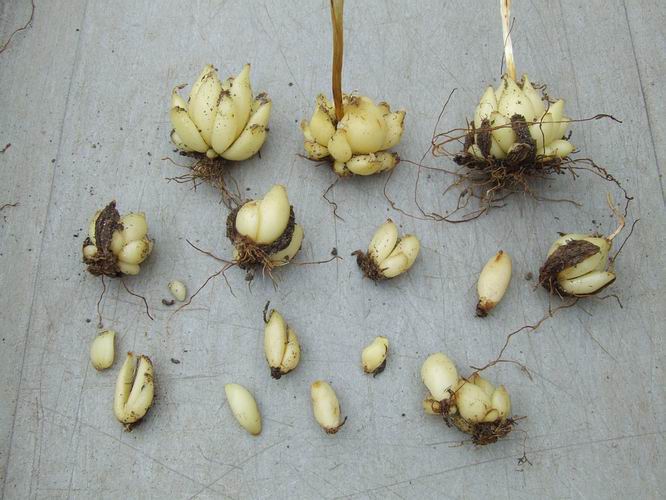
Fritillaria pluriflora bulbs
Then we have the North American bulbs such as Fritillaria pluriflora where the bulbs are still modified swollen leaf bases with the main growth coming from the base - the main stem rises from the base and passes up through centre of the scales.
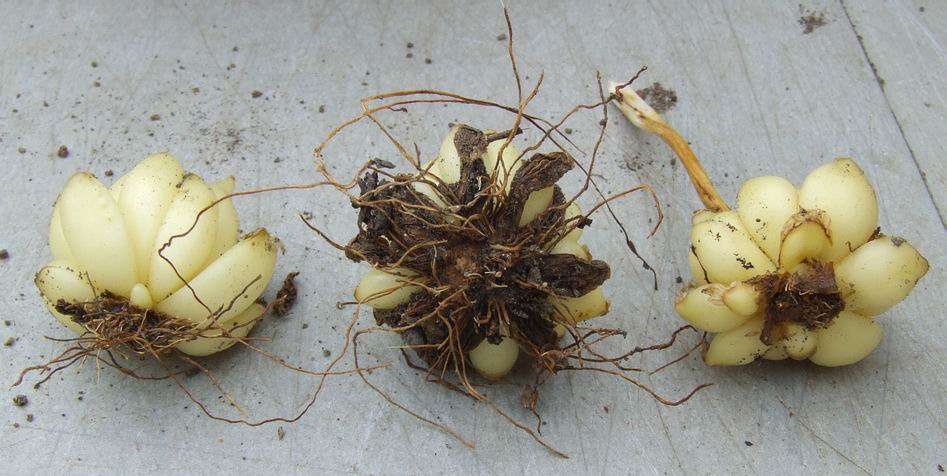
Fritillaria pluriflora bulbs underneath
Unlike true bulbs, such as Narcissus, a Fritillaria bulb is replaced every year and you can see the dried remains of the old bulb on the bottom of the new one. You can also see the base of the old stem where the roots were with all the new scales clustered around. You can easily increase Fritillaria pluriflora by removing some of the scales and in fact it is very difficult not to knock some of the outside ones off while handling it but, if you take too many off, it will reduce the flowering performance of the bulb.
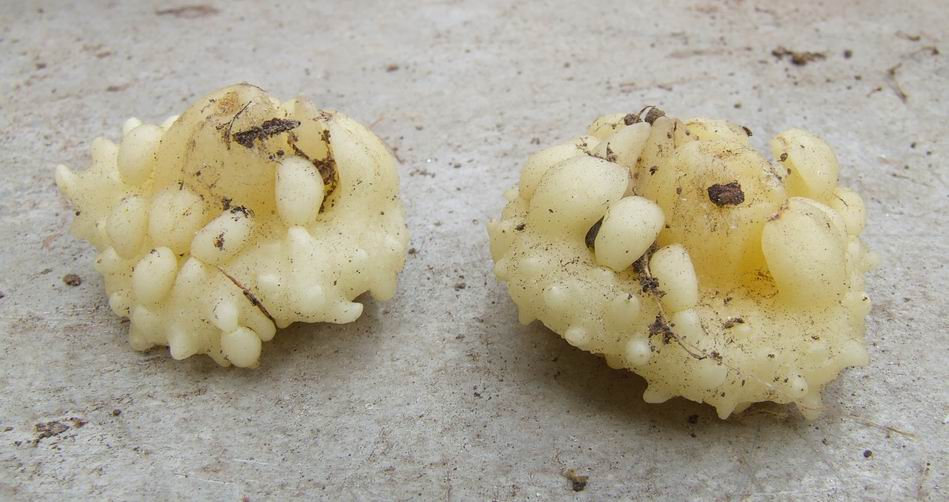
Fritillaria affinis bulbs
Then we have Fritillaria affinis bulbs which are the classic North American rice grain bulbs - you can remove all the rice from these bulbs without affecting the flower power. This is where I start to have a problem with the term bulb as I do not see this type of organism as a classic bulb of modified swollen leaf bases. Yes, the rice grains and other swollen parts around the top are scales formed from modified leaf bases but the centre and the saucer shaped base behaves exactly like a corm with the roots coming from the base and the stem rising from the top. I think it is another case where man's need to pigeonhole and create order does not always fit in with the plants. I believe that Fritillaria affinis and the likes have a structure consisting of a corm and a bulb at the same time with both a swollen stem and swollen leaf bases on one structure - I also think that some Erythronium are like this. So while we do have classic bulbs, corms and tubers I also believe we have intermediates where the swollen unde
rground storage systems adopted by plants involve more than one type.
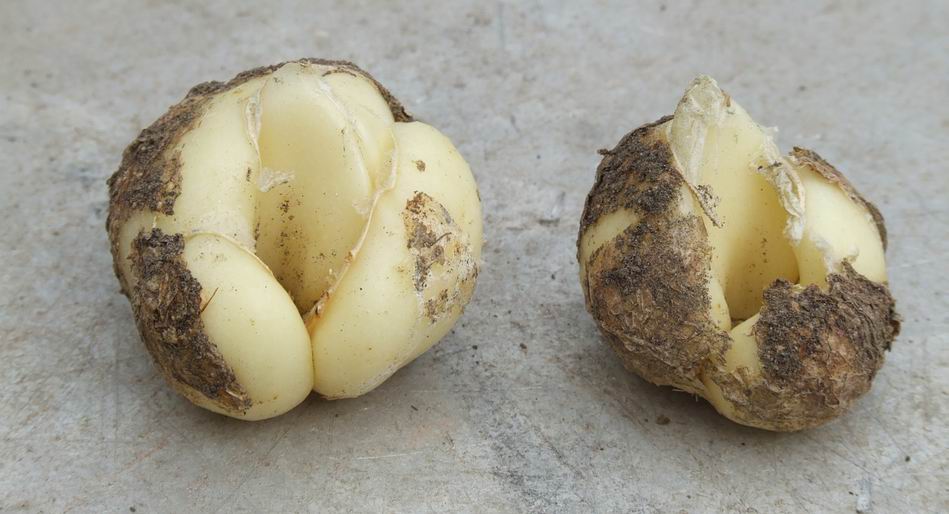
Fritillaria stenanthera bulbs
Fritillaria stenanthera are a slight variation on the twin scaled bulbs of many frits as they can have additional scales - this is seen more as we move east from the classic frits of Turkey and the Mediterranean.
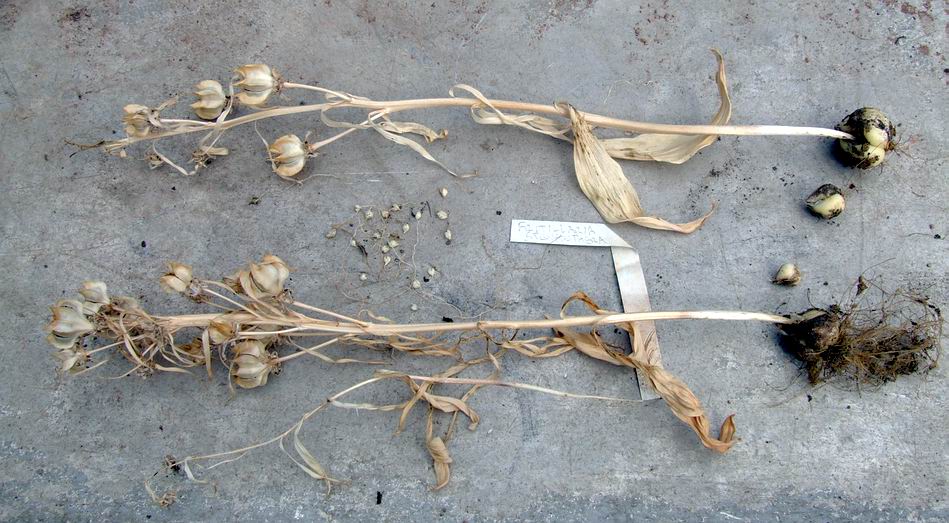
Fritillaria stenanthera seed stems
These Fritillaria stenanthera bulbs also produced a reasonable crop of seed showing that allowing your bulbs to set seed does not compromise the growth of the bulb.
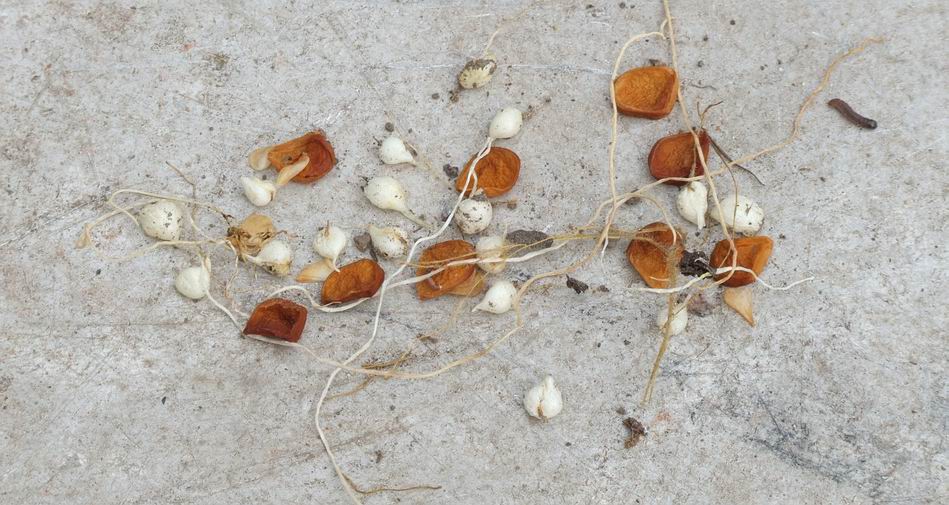
Fritillaria stenanthera seed and seedlings
I sowed a few seeds back into this pot with the parent bulbs last year and here are the young seedling bulbs beside some seed - I potted these back in with the mature bulbs.
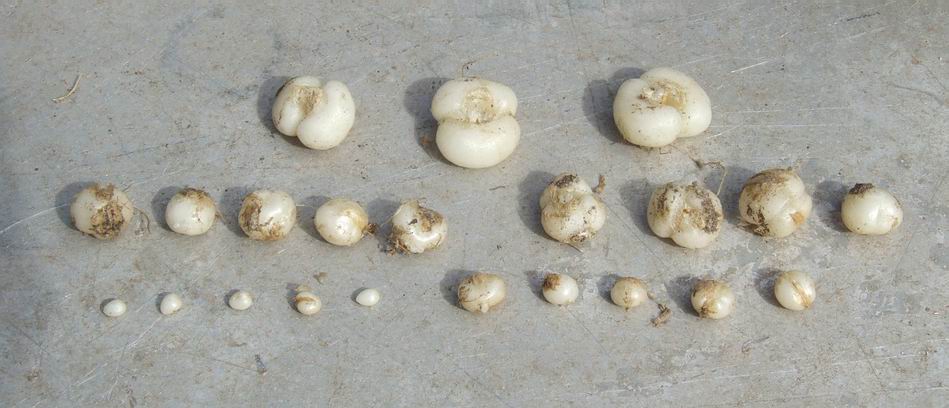
Rice to bulb
The progression from seedlings, or rice grains, to flowering bulb takes roughly the same length of time - the rice sometimes reaches flowering size one year before the seed sown ones. If you count up the phases you will see it takes on average five years from seed to flowering size.
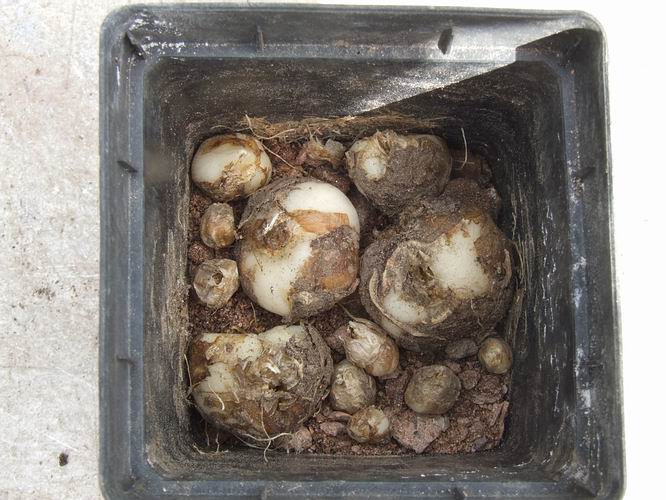
Packed in
I grow all my bulbs packed in with as many as I can squeeze into a pot and as long as you water and feed them well to compensate for the competition they will grow extremely well.
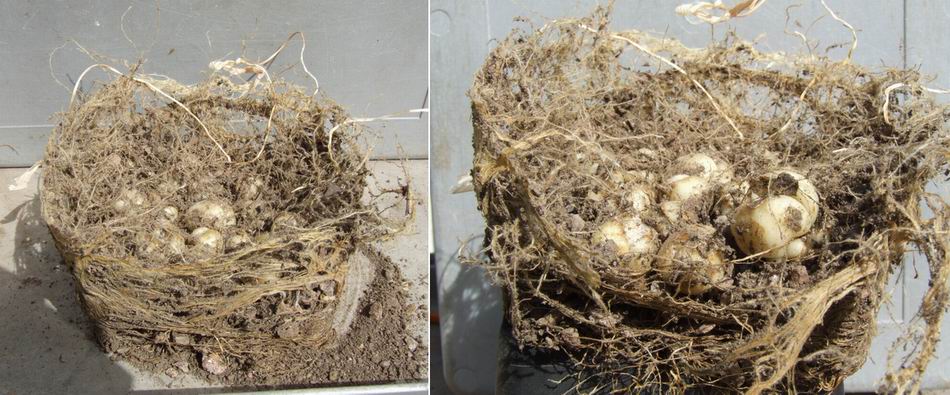
Well rooted fritillaria bulbs
Here you can see a well rooted pot of Fritillaria thunbergia - notice how the roots will grow well above the level that the bulb is planted at.
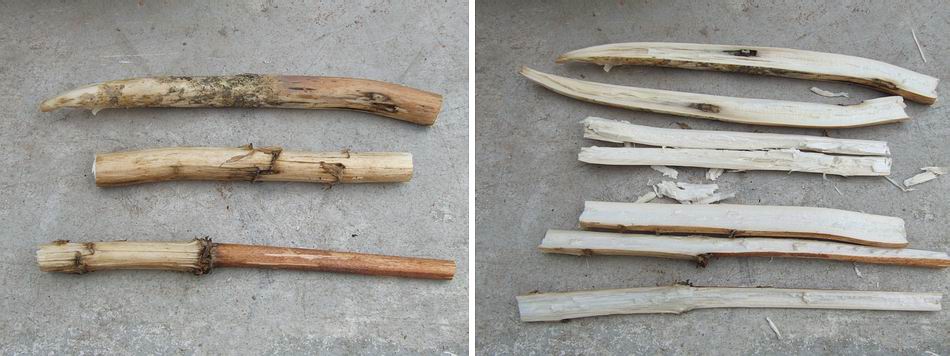
Fritillaria imperialis stem
As I was collecting the seeds from a Fritillaria imperialis I pulled this stem out from the ground. I was impressed with the strength it had so decided to investigate its engineering. It is not a hollow stem - the inside is filled with a pith-like fibrous structure, along with the strong outside shell, makes for a very strong stem well capable of holding up the beautiful and heavy flower heads through the worst of the winds.
^ back to the top ^
|

